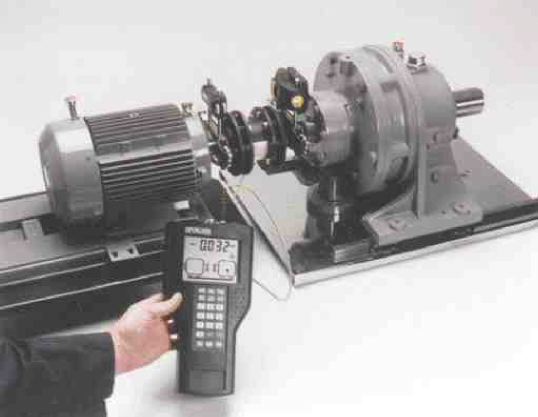
FOCUS ON ALIGNMENT: Laser alignments not as simple as they seem
Optical alignment equipment is easy to learn, extremely fast and very accurate. For this reason, many maintenance managers and supervisors mistakenly place the equipment in the hands of inexperienced ...
June 1, 2001 | By Chuck Yung
 Photo: Hyatt Industries
Photo: Hyatt Industries Optical alignment equipment is easy to learn, extremely fast and very accurate. For this reason, many maintenance managers and supervisors mistakenly place the equipment in the hands of inexperienced technicians and expect them to align all the rotating machinery in the plant. For dead-on alignment, good results still depend on the user’s training, experience and skill.
The benefits of laser alignment became apparent to me a couple of years ago when we first used the equipment for an emergency alignment of a large motor. Although the alignment normally required two full shifts to complete, one of our better technicians completed the job in under three hours. Because he didn’t think the procedure could be that simple, he performed it twice–just to be sure.
Such testaments to the ease-of-use and timesaving potential of optical alignment equipment are common. It allows a properly trained novice to complete a simple alignment faster than most skilled millwrights can using dial indicators. If, however, the machinery being serviced has unusual operating characteristics, such as thermal growth, operator knowledge and experience are essential.
The operating characteristics of some machinery can be complex. For instance, the temperature differential of a high-volume, low-pressure blower may be 100F or greater. This differential can cause components to expand or contract, often at varying rates and in different directions. Unlike most skilled alignment technicians, many novices will not factor in the thermal growth characteristics of the different components. When this happens, the unit may run smoothly at start-up but show increasing levels of vibration as it heats up to operating temperature.
Another example is an electric motor driving through a gearbox. The high-speed end of the gearbox may run quite a bit warmer than the low-speed end. Not only will the entire gearbox grow horizontally, but the hotter end will also expand vertically. Unless an angular correction is made during alignment, the machinery will be misaligned at operating temperature.
A boiler feed pump that operates at 180F offers a similar challenge. If it is coupled to an electric motor with a 40F temperature rise, any misalignment at operating temperature could be catastrophic. Most boiler feed pumps run at 3600 rpm, so the alignment tolerances leave little room for error.
For example, if a pump has a shaft height of 10 in. and a temperature difference of 140F, an offset of 0.009 in. is needed to avoid vibration and ensure the unit runs smoothly at both alignment and operating temperatures. (Coefficient of thermal expansion = 0.0000067 in. x in. x degrees = 0.0000067 x 10 x 140 = 0.009 in.)
Equipment that operates in extreme cold also requires careful alignment. A pump for cryogenic machinery, for example, may be aligned at 70F but actually operate at minus 100F. The correct alignment must calculate how much the pump height will decrease while the pump is operating. To further complicate matters, the height of the motor will increase as it warms up.
The only case where “cold alignment” is sufficient is where equipment operates only momentarily, such as the motor that operates the locks at the Panama Canal. Since this motor runs less than three minutes every few hours, operating temperatures are less of an issue.
The bottom line is that optical alignment equipment offers knowledgeable technicians a better and faster way to complete alignments. For the novice, it also offers a unique opportunity to make costly mistakes. So be careful the next time you’re tempted to send that new technician out to align machinery without sufficient training. No one wants to spend a dollar to save a dime.
Chuck Yung is a technical support specialist at the Electrical Apparatus Service Association (EASA) in St. Louis, MO. For more information, call 314-993-2220 or visit www.easa.com. EASA is an international trade association of more than 2,500 firms that sell and service electrical, electronic and mechanical apparatus.
